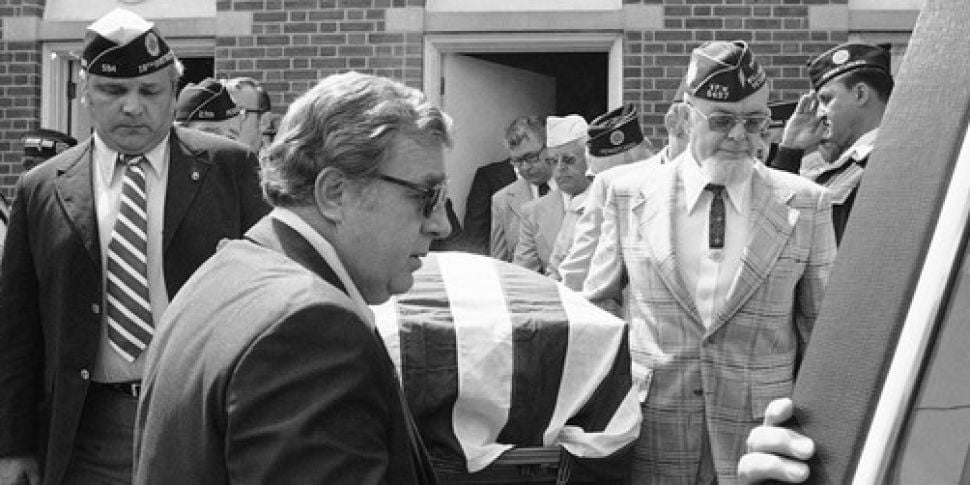On July 21st, 1976, the staff of the Bellevue-Stratford Hotel in downtown Philadelphia were getting ready. One of the city’s best-known hotels, referred to by locals as the Grand Dame of Broad Street, had fallen on hard times. Having weathered the Great Depression and seen business fall off in the 1950s and 60s, the Grand Dame’s glory days were behind her, but she was still one of the classiest joints in town.
Which is why the American Legion, a support body set up and run by American service members, chose it as a base for its annual convention. Two thousand attendees arrived there 40 years ago. Within a week, more than 147 of them had been admitted to hospital. Twenty-nine never went home. And nobody could figure out why.
1976 was a special year for the men and women of the American Legion. Celebrating the bicentennial of the Declaration of Independence, they spent four days attending speeches in the Bellevue-Stratford’s ballroom. They loitered in the lobby, chatting and sharing war stories, seeing old friends and making new ones. When the convention came to a close, the former soldiers went home, some complaining feeling tired, but nothing especially out of the ordinary for greying men.

The rooftop of the Bellevue-Stratford in Philadelphia [US Library of Congress]
The sickness appeared to strike from nowhere. Headaches, chest pains, fever, and lung congestion. On July 27th, Ray Brennan, the 61-year-old bookkeeper and a former Air Force captain died of a suspected heart attack. Three days later, four more had died. The only link between them, that they had all been at Bellevue, was spotted by a doctor by the name of Ernest Campbell, who noticed that three of his deceased patients had been at the convention.
As the death toll rose, the mystery deepened. Members of the American Legion mourned their fallen friends while scientists at Atlanta’s Centres for Disease Control (CDC) struggled to identify just what was responsible for such a lethal infection. There was speculation of foul play. Perhaps someone had poisoned them? Was this the start of a rampage of bio-terrorism? Or was it some unknown micro organism hidden in the Grand Dame, unleashed indiscriminately onto scores of old servicemen?
“Sabotage is an easy possibility to consider,” revealed Dr Lewis Polk, Philadelphia’s health commissioner, “But there is no evidence to lead us to that conclusion.”

The cover of TIME Magazine in August 1976, when the CDC's search for a conclusion to the mystery was beginning to wan [TIME]
The search for the culprit, the origins of the so-called ‘Philly Killer’ became a national obsession. By August, TIME magazine dedicated its cover story to the tireless research carried out by CDC. The story revealed the CDC had abandoned the hunt for a micro-organism, believing instead that some unknown toxicological agent must be to blame.
Six months later, and the iconic magazine carried another story. “Found: The Philly Killer… Perhaps.” A dogged CDC researcher, Dr Joseph McDade, had finally found something at the hotel, an unusual rod-shaped bacteria. Having abandoned searching for pathogens, McDade determined the best course of action would simply be to look for anything he didn’t recognise. He would later describe his technique as being “like searching for a missing contact lens on a basketball court with your eyes four inches away from the floor,” and as luck would have it, he was right.

The Grand Dame of Broad Street's lobby [US Library of Congress]
Legionella pneumophila was the name given to this peculiar strain of bacteria, a solemn nod to its first recognised victims. The strain makes its home in warm and damp places, just like the ventilation system of the Bellevue-Stratford Hotel on a hot July day. For the comfort of their guests, not to mention the 2,000 Legionnaires, the hotel staff had turned on the air conditioning, slowly circulating the deadly bacteria around till it found a new home, one it killed days later.
In the four decades since, there have been more outbreaks of Legionnaires’ Disease all over the world, in most cases traced back to stagnant water resting in air conditioning vents. In fact, researchers even managed to connect the disease to deaths from unsolved outbreaks in the past, including a minor one at the Bellevue-Stratford a few years before the American Legion arrived in 1976.
Today, architects learn how to avoid creating fertile breeding grounds for Legionella pneumophila when designing new buildings. There are guidelines and recommendations for the maintenance and engineering of heating a cooling systems installed in buildings, but the disease still pops up from time to time. As for the Bellevue-Stratford, the Grand Dame of Broad Street is still there. And if you were there in the middle of a hot July day, chances are you’d want to turn on the air conditioning.
Correction: An earlier published version of this story misidentified the above TIME cover as being from January 1977.









